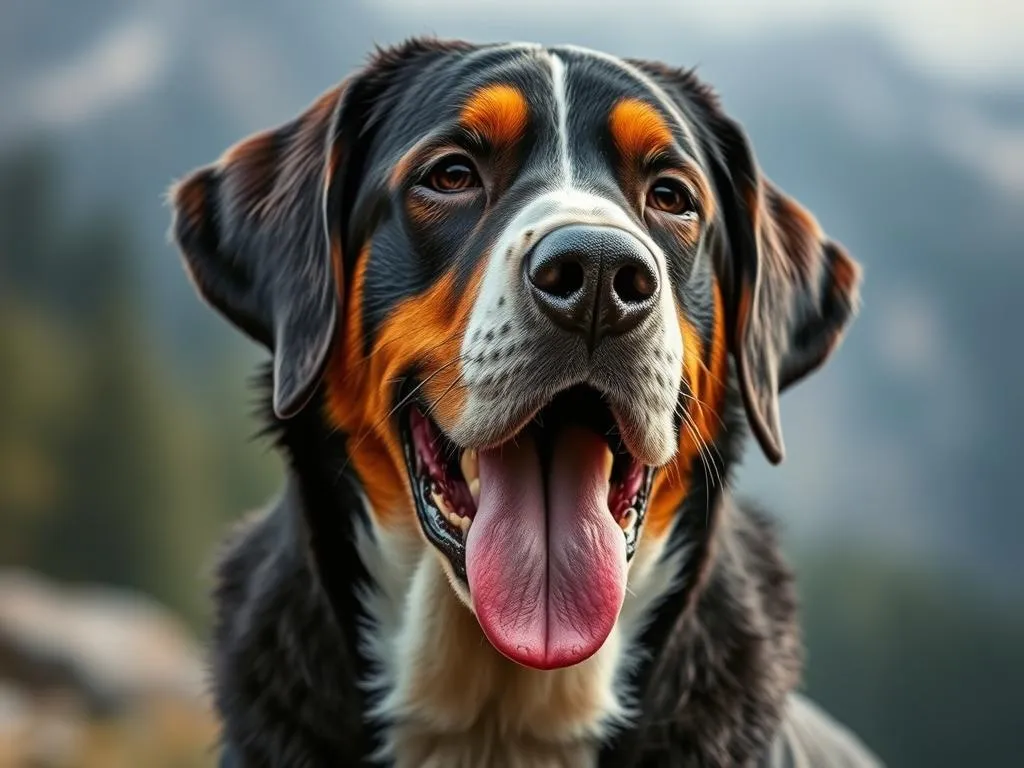
The world of dog breeds is vast and diverse, with each breed bringing its own unique history, characteristics, and charm. Among them, the Greater Swiss Mountain Dog stands out for its impressive stature and gentle demeanor. This breed, known for its loyal and affectionate nature, has a rich history rooted in the mountainous regions of Switzerland.
History of the Greater Swiss Mountain Dog
Origins
The Greater Swiss Mountain Dog hails from the Swiss Alps, where it was originally bred as a multi-purpose farm dog. Its ancestors date back to ancient times, likely descending from the Molosser-type dogs brought to the region by the Romans. These dogs were primarily used for herding cattle, pulling carts, and serving as loyal companions to farmers and their families.
Historically, the breed was indispensable in rural Swiss communities. They were known for their strength and agility, making them excellent draft dogs capable of hauling heavy loads across challenging terrains. Over time, the Greater Swiss Mountain Dog became integral to farm life, aiding in herding and protecting livestock.
Development
As the years progressed, the breed saw significant development and refinement. The introduction of selective breeding practices helped enhance desirable traits, such as a strong build and friendly temperament. The Greater Swiss Mountain Dog shares lineage with several other Swiss breeds, including the Appenzeller and Bernese Mountain Dog, which influenced its physical characteristics and abilities.
By the early 20th century, the breed faced a decline in popularity due to changes in agricultural practices and the introduction of motorized vehicles. However, dedicated enthusiasts worked to revive the breed, leading to the establishment of breed standards and formal recognition by kennel clubs. Today, the Greater Swiss Mountain Dog is celebrated for its versatility, loyalty, and gentle nature.
Physical Characteristics
Size and Weight
The Greater Swiss Mountain Dog is a substantial breed, known for its impressive size. Males typically stand between 25 to 28 inches tall at the shoulder, while females range from 23 to 26 inches. In terms of weight, males usually tip the scales at 110 to 140 pounds, and females weigh between 85 to 110 pounds. This makes them one of the larger dog breeds, comparable to the Bernese Mountain Dog and the Newfoundland in terms of size and presence.
Coat and Color
The breed’s coat is another defining feature. The Greater Swiss Mountain Dog possesses a short, dense double coat that provides insulation against the cold. This breed’s fur is primarily black, accented with striking white markings on the face, chest, and paws, as well as rust-colored spots above the eyes and on the legs. The combination of these colors gives the dog a distinctive and appealing appearance, setting it apart from other breeds.
Distinctive Features
The Greater Swiss Mountain Dog is characterized by its large, strong build, with a deep chest and robust frame. Their large paws are designed for traversing rugged terrain, providing stability and traction. The breed’s facial features include a broad head with a gentle expression, expressive eyes, and strong jaws, conveying both strength and kindness.
Temperament and Behavior
General Temperament
Known for their friendly and affectionate nature, Greater Swiss Mountain Dogs are excellent family companions. They are typically good with children, displaying a protective instinct while remaining gentle and playful. This breed thrives on companionship and often seeks to be involved in family activities, making them wonderful household pets.
Energy Level
The Greater Swiss Mountain Dog has a moderate energy level, requiring regular exercise to maintain its physical health and mental well-being. Daily walks, playtime, and opportunities for social interaction are essential for this breed. Their playful demeanor and love for outdoor activities make them great companions for families who enjoy an active lifestyle.
Trainability
Intelligent and eager to please, Greater Swiss Mountain Dogs are relatively easy to train. They respond well to positive reinforcement techniques, such as treats and praise. Early socialization and obedience training are important for developing good manners and ensuring a well-rounded adult dog. Engaging them in training games can also enhance their learning experience.
Health Considerations
Common Health Issues
Like all breeds, the Greater Swiss Mountain Dog is predisposed to certain health issues. Some common genetic conditions include hip dysplasia, elbow dysplasia, and bloat (gastric torsion). Responsible breeding practices can help reduce the risk of these conditions, and regular veterinary check-ups play a crucial role in monitoring the dog’s health.
The lifespan of a Greater Swiss Mountain Dog typically ranges from 8 to 11 years. Regular exercise, a balanced diet, and prompt attention to health concerns can contribute to a longer, healthier life.
Preventative Care
Preventative care is vital for maintaining the health of a Greater Swiss Mountain Dog. Routine vaccinations, parasite control, and annual health checks with a veterinarian are essential. It’s also important to stay informed about breed-specific health issues and to seek veterinary advice promptly if any concerns arise.
Care and Maintenance
Grooming Needs
The grooming needs of the Greater Swiss Mountain Dog are relatively moderate. Their short coat requires regular brushing, especially during shedding seasons, which typically occur in spring and fall. Bathing should be done as needed, usually every couple of months, to keep their coat clean and healthy. Regular grooming not only helps manage shedding but also promotes bonding between the dog and owner.
Nutrition
A well-balanced diet is crucial for the health and vitality of a Greater Swiss Mountain Dog. High-quality dog food that meets their nutritional needs is essential. Owners should consult with a veterinarian to determine the best dietary plan, taking into account the dog’s age, weight, and activity level. Portion control is also important to prevent obesity, especially since this breed can be prone to weight gain.
Exercise and Activity
Daily exercise is a must for the Greater Swiss Mountain Dog. Ideally, they should engage in at least one hour of physical activity per day. Activities can include brisk walks, hiking, and playing fetch. Additionally, they enjoy mentally stimulating games and training exercises, which can enhance their physical and mental health.
Living with a Greater Swiss Mountain Dog
Ideal Home Environment
The Greater Swiss Mountain Dog thrives in a home with ample space. A house with a yard is ideal, as it allows them to run and play. However, they can adapt to apartment living as long as they receive sufficient daily exercise. These dogs are social animals and do best in environments where they can spend time with their families.
Interaction with Other Pets
Generally, Greater Swiss Mountain Dogs are friendly towards other dogs and pets, especially if they have been socialized from a young age. When introducing them to other animals, it’s important to do so gradually and under supervision. Positive reinforcement can help them learn to coexist peacefully with other pets in the household.
Adoption and Breeding
Finding a Greater Swiss Mountain Dog
When looking to bring a Greater Swiss Mountain Dog into your home, it’s essential to find a reputable source. Potential owners can choose between adopting from shelters or rescues or purchasing from reputable breeders who adhere to ethical breeding practices. It’s important to research and ask questions to ensure that the dog is healthy and well-socialized.
Considerations Before Adoption
Before adopting a Greater Swiss Mountain Dog, it’s crucial to evaluate your lifestyle and readiness for dog ownership. Consider your time availability for exercise, attention, and training. This breed requires commitment and can live for many years, so potential owners should be prepared for the long-term responsibilities of caring for a dog.
Conclusion
The Greater Swiss Mountain Dog is a remarkable breed known for its loyalty, gentle nature, and striking appearance. With a rich history as a farm dog, this breed has proven to be a loving companion for families. Its moderate exercise needs, trainability, and friendly demeanor make it an excellent choice for those looking for a devoted pet.
Responsible ownership and care are essential for ensuring a healthy and happy life for your Greater Swiss Mountain Dog. Embracing the joys of companionship with this breed can lead to countless adventures and unforgettable memories. Whether you’re considering bringing one into your home or simply want to learn more about this wonderful breed, the Greater Swiss Mountain Dog is sure to capture your heart.









